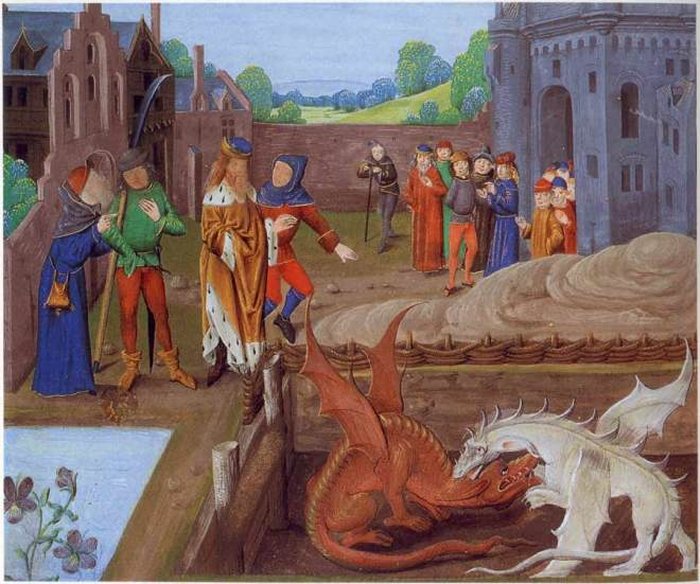Magical Dinas Emrys – Battle Of The Dragons And Merlin’s Hidden Treasure
Ellen Lloyd - AncientPages.com - Legend tells Merlin's precious treasure is hidden in a cave at Dinas Emrys in the mountains of North Wales.
Dinas Emrys is a unique ancient site. Not only is it mentioned in myths and legends, but the place is also of great historical importance.
Ruins of what is considered to be an 11th Century tower at Dinas Emrys. Credit: Public Domain, CC BY-SA 3.0
Dinas Affaraon or Dinas Ffaraon (Fortress of Pharaoh) appears in Medieval Welsh literature, and its original name is Dinas Emrys.
This mysterious and beautiful place is associated with dragons, Arthurian legends, Druids, and historical events. Some stories tell this is where we can find the mythical city of higher powers.
Archaeological Discoveries At Dinas Emrys
The Iron Age hillfort remains that once stood there can still be seen, but what purpose did the building serve? Some historians suggest it was once a castle built by Llywelyn the Last (1223 – 1282), the last prince of Wales before its conquest by Edward I of England.
It is possible the castle once guarded the road to the mountain pass of Snowdon. The fortification had strong stone walls between 2.5 and 3 meters (8 and 10 ft) thick, and archaeological excavations reveal that it was inhabited in the Roman period though the site is pre-Roman.
"Amulets with 'alpha-omega' and 'chi-rho' monograms attest a Christian presence, though the Christian was not necessarily the chief householder." (Geoffrey Ashe - Merlin: The Prophet and his History)
Inside Dinas Emrys, there is evidence of ironworking and a pool. The tale of Vortigern and the dragons mention this artificial construction and the pool. As mentioned before on Ancient Pages, on the national flag of Wales, there is a red dragon that most people associate with the battle of King Arthur and other ancient Celtic leaders.
Some believe that the Red Dragon represented Vortigern's people. In contrast, others, like Geoffrey of Monmouth, saw it as a prophecy of the coming of King Arthur (funnily enough, the name of King Arthur's father – Uther Pendragon – translates into 'Dragon's Head'). However, the Red Dragon of Wales dates back to Roman times.
Merlin, a famous wizard mentioned in Arthurian legend and medieval Welsh poetry, stayed for some time at Dinas Emrys.
As Geoffrey Ashe explains in his book Merlin: The Prophet and his History, "in later legend, the belief that Merlin stayed at Dinas Emrys persists, though he is never said to have made it a permanent home. He left behind a golden cauldron containing treasure, hiding it in a cave and blocking the entrance with a large rock and a mound of earth.
Dinas Emrys with the River Glaslyn in the foreground. Credit: Public Domain
The treasure is meant for a particular person, identified only as a youth with yellow hair and blue eyes. A bell will ring when he is near the spot, and the barrier will crumble as he sets foot on it. The bell has not rung yet. Treasure-seekers who have looked for the cave have been frightened off, it is said, by thunderstorms and other portents."
Dinas Emrys And The Legend Of Vortigern
From a historical perspective, Vortigern is a very complex figure. Vortigern may have been the King of Britons in the 5th century. According to a legend, King Vortigern had his stronghold at Dinas Emrys.
Tradition has it that King Vortigern invited Hengist and Horsa, the legendary Anglo-Saxon warrior brothers and leaders of the first settlers in Britain, to help him fight the Picts and Scots. However, they revolted, killing his son and forming the Kingdom of Kent. King Vortigern then took refuge in North Wales.
According to the story in the ninth-century Historia Britonum of Nennius, decorated by Geoffrey of Monmouth, King Vortigern constructed a hiding place in Wales.
"Vortigern, driven to desperation, consulted soothsayers – by courtesy, magicians. They advised him to give up the attempt to control his kingdom and build himself an impregnable stronghold in some remote place where he could survive. After considering several possible sites, he tried Snowdonia and picked out the hillfort now known as Dinas Emrys," Ashe writes.
However, things did not go as planned. The problem with the built towers was that they collapsed every morning. "Every time the base of the tower began to take shape, it fell to pieces, and all the materials vanished into the earth," Ashe explains.
Merlin Arrives At Dinas Emrys
It continued for many weeks until King Vortigern was advised to seek help from a young boy not conceived by a mortal man. After searching for some time, King Vortigern found a boy named Myrddin Emrys (Merlin Ambrosius) – his name possibly means 'sea fortress of light.'
King Vortigern's advisers told him that to build his tower, the boy must be sacrificed to appease the spirits of the hill. When Myrddin Emrys heard this, he laughed and explained to King Vortigern this was the wrong approach.
Medieval manuscript showing the legend of the dragons. Credit: Public Domain
The dragon story has its roots in the ancient tale of Lludd and Llefelys, sons of the sun god Beli.
As Ashe writes, Myrddin Emrys "told Vortigern that the tower could not stand because there was a hidden pool beneath it in which two dragons lived (wyrms). Every night they rose and fought, and their rising made the tower fall.
On every May Eve, King Lludd of Britain heard a hideous scream. No one knew whence this scream came, and it so frightened the people that it caused infertility, panic, and mayhem throughout the land. Lludd sought help from his brother Llefelys, King of Brittany, who told him two battling dragons caused the scream. The British dragon (the red one, now on the Welsh banner) would scream when it feared the alien white dragon was defeating it.
Lludd captured both dragons in a cauldron filled with mead – one of our 'medicines,' like peyote for other cultures – which they drank. They then transformed themselves (as apparently, dragons did) into pigs and fell asleep. Lludd wrapped them in a white silk cloth and laid their sleeping forms in the now-empty cauldron under Dinas Emrys.
Merlin told Vortigern it was these dragons who had awoken, transformed back to dragon shape, and now fought each night to make a ruin of Vortigern's tower. He explained that the red dragon represented the British people while the white dragon was the Saxon invaders he had brought into the country and was now laying at waste while he did nothing to stop them. Merlin called, and the two beasts rose and began to fight. The red dragon slew the white one, which Merlin translated as the overthrow, in due course, of the Saxons and the subsequent demise of Vortigern.
The druid advisors had warned him that the fatherless boy must also be slain because he was a danger to the king, and, in a sense, he was because he foretold Vortigern's end and the reason for it.
After their battle, the dragons disappeared, and Vortigern went on to build his tower successfully although to no purpose in the end."
After the tower at Dinas Emrys was completed, Merlin was free to go, but he buried a treasure at the site before leaving the place. People still search for the wizard's glory, and it cannot be denied that beautiful Dinas Emrys remains a magical place of great historical and mythological value.
Written by Ellen Lloyd – AncientPages.com
Updated on January 15, 2024
Copyright © AncientPages.com All rights reserved. This material may not be published, broadcast, rewritten or redistributed in whole or part without the express written permission of AncientPages.com
Expand for referencesMore From Ancient Pages
-
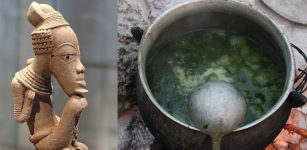 First Insight Into 3,500-Year-Old Cuisine Of The Enigmatic Nok Culture
Archaeology | Jan 17, 2022
First Insight Into 3,500-Year-Old Cuisine Of The Enigmatic Nok Culture
Archaeology | Jan 17, 2022 -
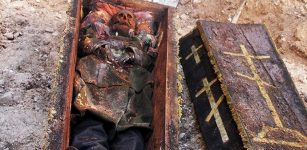 Dispute Between Russia And Poland Over Discovery Of Czarist Officer’s Corpse In Turkey
Archaeology | Apr 10, 2018
Dispute Between Russia And Poland Over Discovery Of Czarist Officer’s Corpse In Turkey
Archaeology | Apr 10, 2018 -
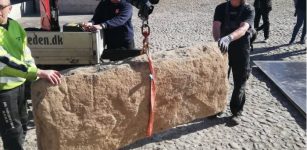 Huge Rare Runestone Found Under The Kitchen Floor In Randers Investigated
Archaeology | Jun 8, 2023
Huge Rare Runestone Found Under The Kitchen Floor In Randers Investigated
Archaeology | Jun 8, 2023 -
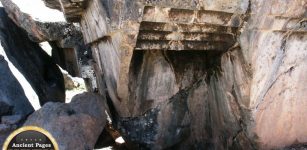 Enigma Of Ancient Upside Down Stairs At Sacsayhuamán
Featured Stories | May 27, 2014
Enigma Of Ancient Upside Down Stairs At Sacsayhuamán
Featured Stories | May 27, 2014 -
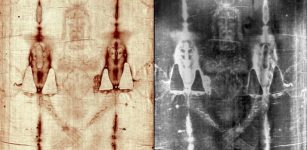 Blood Discovered On The Shroud Of Turin – Strand Of Jesus’ DNA Can Be Found – Researchers Say
Archaeology | Jul 19, 2017
Blood Discovered On The Shroud Of Turin – Strand Of Jesus’ DNA Can Be Found – Researchers Say
Archaeology | Jul 19, 2017 -
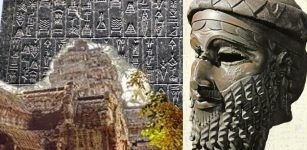 Collapse Of Akkadian Empire Strongly Related To Catastrophic Climate Change
Archaeology | Oct 28, 2019
Collapse Of Akkadian Empire Strongly Related To Catastrophic Climate Change
Archaeology | Oct 28, 2019 -
 Captain James Cook’s Famed Vessel The Endeavour Possibly Discovered On The Coast Of Rhode Island
Archaeology | Feb 4, 2022
Captain James Cook’s Famed Vessel The Endeavour Possibly Discovered On The Coast Of Rhode Island
Archaeology | Feb 4, 2022 -
 Rare Stone Showing Ancient Rome’s City Limits – Accidentally Found
Archaeology | Jul 18, 2021
Rare Stone Showing Ancient Rome’s City Limits – Accidentally Found
Archaeology | Jul 18, 2021 -
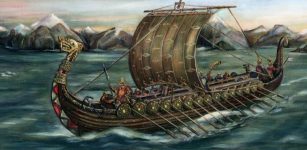 Why Were Viking Raids So Successful?
Ancient History Facts | Aug 3, 2016
Why Were Viking Raids So Successful?
Ancient History Facts | Aug 3, 2016 -
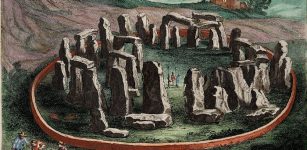 Hunter-Gatherers Used Open Habitats Millennia Before Stonehenge Monuments Were Built
Archaeology | Apr 27, 2022
Hunter-Gatherers Used Open Habitats Millennia Before Stonehenge Monuments Were Built
Archaeology | Apr 27, 2022 -
 On This Day In History: The Gregorian Calendar Implemented – On Oct 5, 1582
News | Oct 5, 2016
On This Day In History: The Gregorian Calendar Implemented – On Oct 5, 1582
News | Oct 5, 2016 -
 Invisible Ink On Antique Nile Papyrus From The Island Of Elephantine – Revealed
Archaeology | Aug 21, 2019
Invisible Ink On Antique Nile Papyrus From The Island Of Elephantine – Revealed
Archaeology | Aug 21, 2019 -
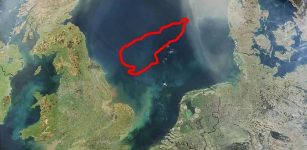 Magnetic Fields Used To Explore Doggerland And Other Prehistoric Submerged Sites
Archaeology | Mar 10, 2023
Magnetic Fields Used To Explore Doggerland And Other Prehistoric Submerged Sites
Archaeology | Mar 10, 2023 -
 Goddess Xi Wangmu (Xiwangmu) Who Controlled Life, Death, Creation And Talked Directly To Humans In Chinese Mythology
Chinese Mythology | Mar 12, 2020
Goddess Xi Wangmu (Xiwangmu) Who Controlled Life, Death, Creation And Talked Directly To Humans In Chinese Mythology
Chinese Mythology | Mar 12, 2020 -
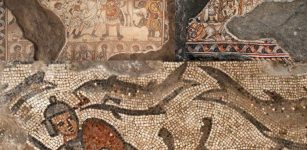 World’s Oldest Mosaics Of Biblical Jonah And The Whale Discovered
Archaeology | Jul 23, 2017
World’s Oldest Mosaics Of Biblical Jonah And The Whale Discovered
Archaeology | Jul 23, 2017 -
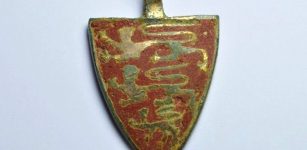 Priceless 800-Year-Old Treasure Featuring Three Golden Lions Unearthed
Archaeology | Aug 5, 2022
Priceless 800-Year-Old Treasure Featuring Three Golden Lions Unearthed
Archaeology | Aug 5, 2022 -
 Controversial Statue Of Anglo-Norman Knight William Marshal In Pembroke Faces Criticism
Artifacts | May 10, 2022
Controversial Statue Of Anglo-Norman Knight William Marshal In Pembroke Faces Criticism
Artifacts | May 10, 2022 -
 TB Was Transmitted in South America – DNA Study Shows How It Happened
Archaeology | Mar 17, 2022
TB Was Transmitted in South America – DNA Study Shows How It Happened
Archaeology | Mar 17, 2022 -
 DNA Unravels Mysteries Of The Crannogs, Ancient Artificial Islands Older Than Stonehenge
Archaeology | Oct 10, 2022
DNA Unravels Mysteries Of The Crannogs, Ancient Artificial Islands Older Than Stonehenge
Archaeology | Oct 10, 2022 -
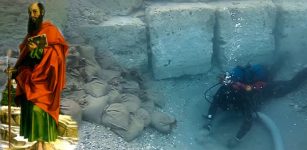 Ruins Of Biblical City Of Corinth Discovered Underwater – Giant Monuments and Remains Of Lighthouse Still Well-Preserved
Archaeology | Dec 19, 2017
Ruins Of Biblical City Of Corinth Discovered Underwater – Giant Monuments and Remains Of Lighthouse Still Well-Preserved
Archaeology | Dec 19, 2017



